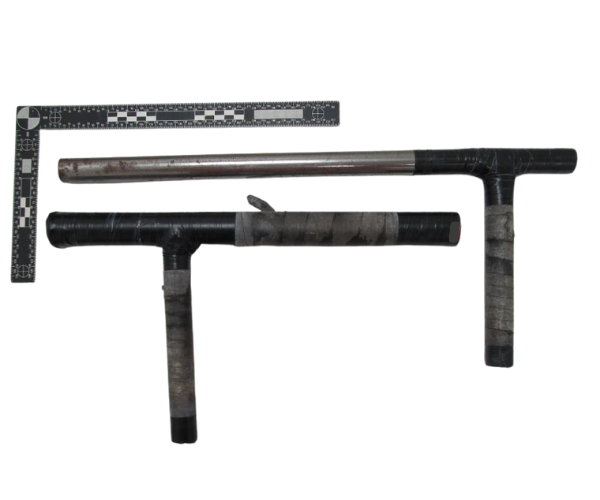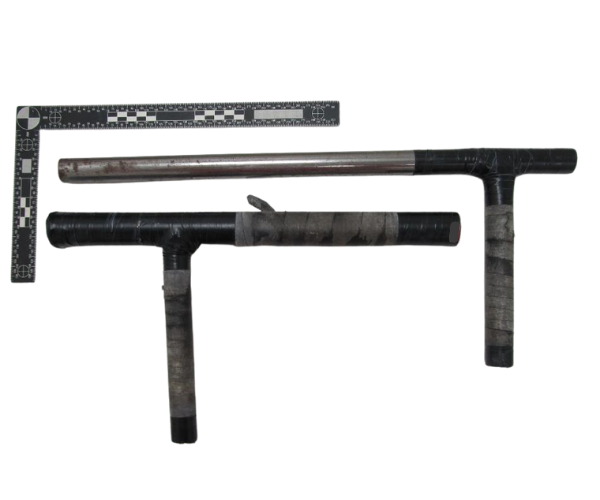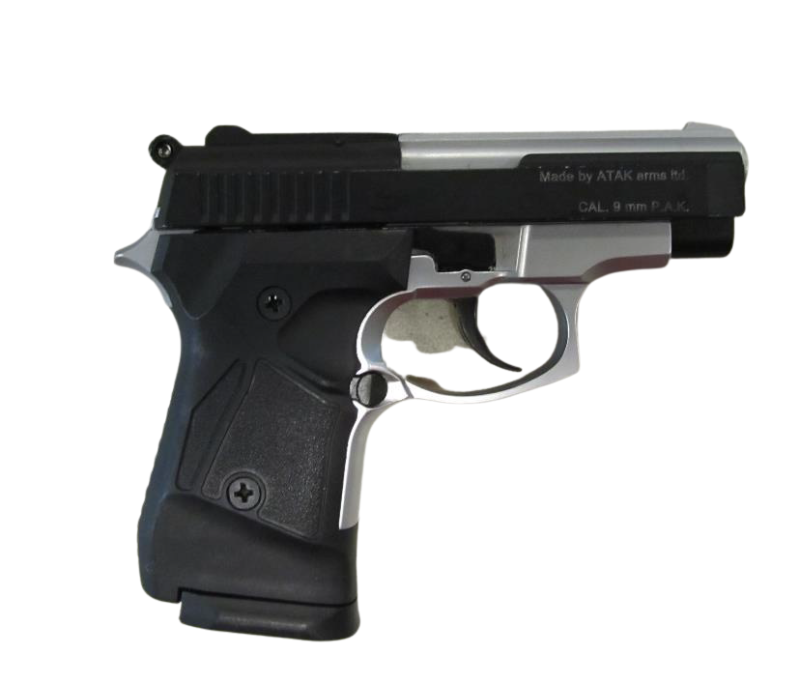
March 09 2023

The term improvised firearms (sometimes also called ghost guns or craft produced guns) covers a wide variety of different firearms and relates generally to those that are not mass produced by a recognised firearms manufacturer, but are instead made from readily available materials and are assembled or manufactured with little to no outside influence.
Being located on an island means it is more difficult for genuine ‘illegal’ firearms to be smuggled into the country. Although this obviously still occurs, the numbers are likely to be relatively small in comparison to countries that have a land border. The difficulty in importing these firearms leads to a premium price being put on genuine firearms.
Improvised and 3D printed firearms are generally manufactured within the UK and one reason is to avoid the risk of discovery during importation. Generally, the materials used to manufacture these firearms cost considerably less than purchasing a genuine factory produced firearm. The parts used for manufacture or conversion are normally sold for innocuous non-firearms related use, such as hydraulic tubing, and can be purchased freely and cheaply either from shops or online.
Improvised firearms can be manufactured by individuals with a range of skill levels: those with low skill generally produce crude and potentially ineffective firearms, whilst those manufactured by individuals or groups with a greater skill level and experience of metal fabrication and manufacturing processes, such as lathe and CNC working (automated control of machining tools to produce highly accurate parts), tend to be of a higher quality and are therefore more reliable.
Improvised firearms that we regularly encounter in case work consist of improvised shotguns (slam‑fire shotguns) and converted blank firers.

Improvised shotguns are commonly referred to as a ‘slam-fire gun’ because of the action required to fire it, i.e. when the device is loaded, the two sections are “slammed” together (with a degree of force) to fire it. It is designed such that the smaller of two tubes (the front section) acts as the barrel/chamber and the larger tube (the rear section) acts as the action/receiver/firing pin. These firearms are the easiest to manufacture, the materials are freely available and cheap, and can be assembled by somebody with little skill. Additionally, these firearms discharge shotgun cartridges, which are easier to obtain due to the prevalence of shotgun shooting sports in this country and the lack of any certificate required for possessing them. However the devices produced can be crude, inaccurate, unreliable and often dangerous to the user. Once fired, the process to reload them can be time consuming, so invariably they are used as single shot, close range weapons.

Blank firers have the appearance of being genuine pistols but have dummy or blocked barrels. They are designed to fire cartridges that contain propellant, but have no bullets, so they just make a loud bang when fired. Although designed by the manufacturer to be fairly difficult to convert into firearms, these types of weapon are routinely seen in casework, either with the dummy barrel drilled out, or cut off and replaced with a steel tube.
The success of these types of conversion is dependent upon the skill of the individual involved. Because the replacement barrels are typically not rifled, they can be inaccurate and, in most cases, the disparity in size between the improvised bullets and the internal size of the barrel means the pistols will not self-load as intended and can be relatively low powered. In some cases, when a steel tube has been attached to the pistol to form an improvised barrel, the adhesive is not appropriate and the new barrel may simply fall off when used.
Blank firers can be purchased legally in shops and online without any form of certificate in the UK and the materials and equipment needed to convert them are cheap and readily available. The resultant converted firearms have the appearance of genuine pistols and may be more desirable in that regard. The blank cartridges can be purchased online or in shops with no certificate and are easily modified to hold improvised projectiles (bullets) at the front, which can be steel ball bearings, airgun pellets or crude lumps of shaped metal. Much like a slam-gun, improvised blank firers can be unreliable, inoperable or dangerous to the user if poorly made.
3D printed guns are those manufactured wholly, or in part, by printing using computer software and a suitable 3D printer. These can be made by individuals with little skill level by using modern equipment and readily available downloadable design files, plus associated step by step instructions. The results can be a fully functional firearm almost regardless of the manufacturing skill level of the individual. Guns printed by individuals with a prior knowledge of firearms and how they work tend to be better than those produced by individuals with no knowledge but, in our view, it is would still be possible for someone with little or no knowledge of guns to manufacture a working 3D printed firearm by merely printing the parts and following the relatively detailed instructions.
3D printed firearms are slowly becoming more popular as 3D printing technology becomes better, cheaper and more readily available. The 3D printed guns that are being seen in casework in this country tend to be of a hybrid variety, meaning that the majority of the firearm is 3D printed out of plastic but parts such as the barrel and bolt are made from modified steel parts which are readily available, cheap and have other non-firearms related uses.
Classification issues
Classification and examination of these improvised firearms is not always clear cut. In order to be classified as a firearm, they must be shown to be capable of discharging a projectile with greater than 1 joule of energy. In the case of improvised shotguns (slam fire guns) the firearms examiner may decide, due to the fact that these weapons can be as dangerous to the user as the intended target, to use a primed cartridge case to test the weapon. Primed cases are cartridges that have had the propellant and projectiles removed and just have the primer remaining. Because the projectiles have been removed, firing a primed case in a weapon does not prove that it is capable of discharging a projectile with over 1 joule of energy. Many of these guns are crudely produced and it is questionable if they will survive the actions of being fired but, with the correct testing equipment and facilities, they can be fired with live ammunition.
Additionally, has the overall length of the improvised shotgun (slam-fire gun) been measured accurately? These devices should be measured with a fired case or dummy cartridge inserted into the device rather than the inner tube inserted all the way to the rear. If measured in this manner, the overall length of the device may be given as shorter than it should, which can affect its classification.
Testing some blank firers can be problematic and, in some cases, it is more appropriate to test a converted blank firer by firing it into a suitable medium such as ballistics gel. If so, the gel has to be ‘calibrated’ prior to use with a reference gun to ensure it is fit for purpose.
Another concern is whether an expert has used their knowledge to get a non-functioning improvised gun to fire by replacing or modifying parts. If so, then the stated case of R v Bewley [2012] EWCA Crim 1457 may be relevant. In that case the court of appeal concluded that “there is no warrant for including within the definition in s.57(1) an item which can only discharge a missile in combination with other tools extraneous to that item. The opening words of s.57(1) refer to the capacity of a particular item and not its capacity in combination with other pieces of equipment”.
If parts of an improvised or 3D printed gun have been recovered, are they considered to be relevant component parts as defined in the Firearms Act 1968, and, if so, can they be used in a lethal barrelled weapon? If the parts are unfinished, then the likelihood is that they are not, and would be free for an individual to possess.
If you have any questions about a firearms case contact us on 0191 332 4999 or kbc@keithborer.co.uk for no obligation, informal review and assessment.
This topic is also covered in a CrimeLine podcast, which subscribers can access HERE.
Author
David Platt
BSc(Hons), MSc